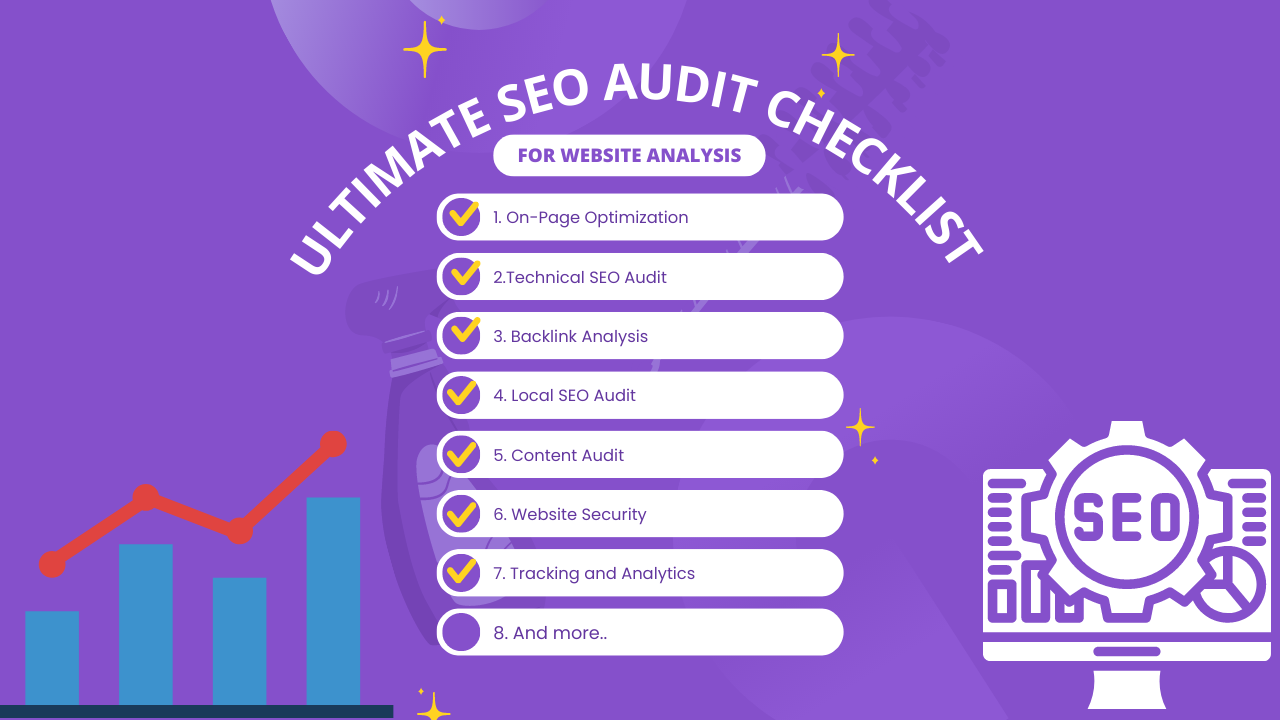In the ever-evolving landscape of digital marketing, staying ahead of the curve is crucial for maintaining a strong online presence.
One of the most fundamental practices in this regard is performing regular SEO audits to analyze the performance of your website.
This SEO audit checklist will guide you through the essential steps to ensure your website ranks at the top of search engine results pages (SERPs).
Understanding the Importance of SEO Audits
Before we dive into the checklist, let’s briefly discuss why SEO audits are so important. In a highly competitive online environment, search engine optimization (SEO) plays a pivotal role in determining the visibility of your website.
Conducting regular audits allows you to identify issues, capitalize on opportunities, and maintain a healthy online presence.
The SEO Audit Checklist
- Keyword Analysis:
- Begin by conducting thorough keyword research. Identify relevant keywords and phrases that your target audience is searching for.
- Ensure your content aligns with these keywords to improve organic search rankings.
- On-Page Optimization:
- Check each page for proper title tags, meta descriptions, and header tags (H1, H2, H3).
- Ensure that keywords are strategically placed within your content, but avoid keyword stuffing.
- Content Quality and Relevance:
- Assess the quality of your content. Is it informative, engaging, and relevant to your audience?
- Regularly update and refresh content to keep it current and valuable.
- Mobile-Friendliness:
- Test your website’s mobile responsiveness. A mobile-friendly site is vital for ranking well in mobile search results.
- Site Speed:
- Use tools like Google PageSpeed Insights to analyze your site’s loading speed. Slow-loading sites can negatively impact user experience and rankings.
- Technical SEO:
- Check for broken links, crawl errors, and duplicate content. Fix any issues that may hinder search engine crawling.
- Implement an XML sitemap and robots.txt file to guide search engines through your site.
- User Experience (UX):
- Evaluate your site’s navigation and overall user experience. A user-friendly site keeps visitors engaged.
- Ensure your website is accessible and adheres to ADA compliance standards.
- Backlinks and Link Building:
- Examine your backlink profile. Are there any low-quality or spammy backlinks? Disavow them if necessary.
- Develop a strategy for acquiring high-quality backlinks from authoritative websites in your niche.
- Local SEO (If Applicable):
- For local businesses, optimize your Google My Business profile and local citations.
- Encourage customer reviews and maintain accurate business information.
- Analytics and Tracking:
- Set up Google Analytics and Google Search Console to monitor website performance.
- Regularly review analytics data to make data-driven improvements.
Conclusion
By following this comprehensive SEO audit checklist, you can effectively analyze your website’s performance and take actionable steps to improve your search engine rankings.
Remember that SEO is an ongoing process, and regularly auditing your site is essential to stay ahead in the competitive digital landscape.
Optimizing your website for search engines not only helps you reach a wider audience but also enhances the user experience, ultimately leading to increased traffic, conversions, and success in the online world.




